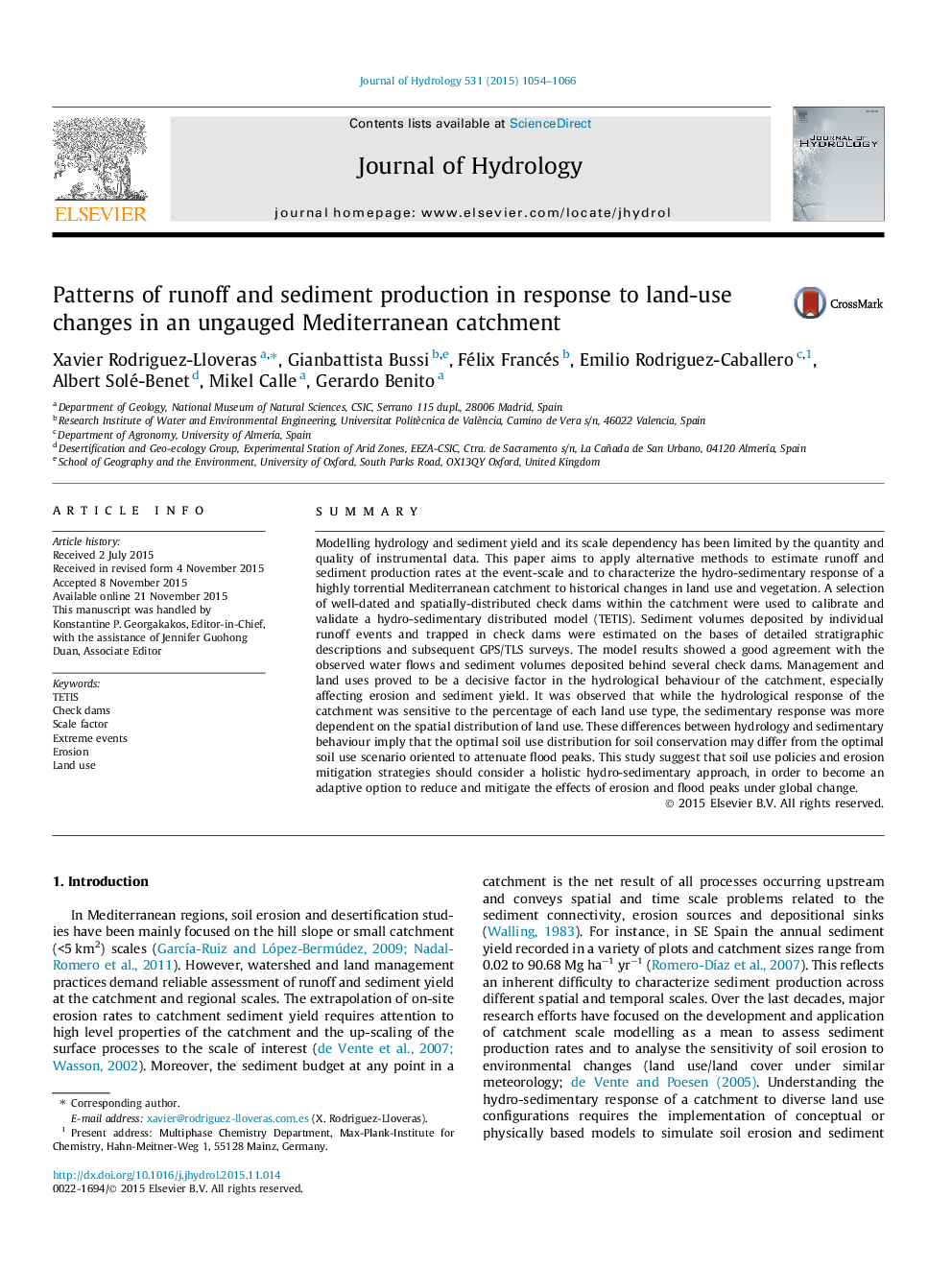| Article ID | Journal | Published Year | Pages | File Type |
|---|---|---|---|---|
| 6409882 | Journal of Hydrology | 2015 | 13 Pages |
â¢The hydro-sedimentary response of an ungauged Mediterranean basin was characterized.â¢Sediment accumulated in check dams was used to calibrate a hydro-sedimentary model.â¢Methodological development modelled distributed sediment yield in ungauged basins.â¢Sediment response was highly dependent on the spatial distribution of land use types.â¢Land use management is an adaptive option to mitigate and cope with climate impacts.
SummaryModelling hydrology and sediment yield and its scale dependency has been limited by the quantity and quality of instrumental data. This paper aims to apply alternative methods to estimate runoff and sediment production rates at the event-scale and to characterize the hydro-sedimentary response of a highly torrential Mediterranean catchment to historical changes in land use and vegetation. A selection of well-dated and spatially-distributed check dams within the catchment were used to calibrate and validate a hydro-sedimentary distributed model (TETIS). Sediment volumes deposited by individual runoff events and trapped in check dams were estimated on the bases of detailed stratigraphic descriptions and subsequent GPS/TLS surveys. The model results showed a good agreement with the observed water flows and sediment volumes deposited behind several check dams. Management and land uses proved to be a decisive factor in the hydrological behaviour of the catchment, especially affecting erosion and sediment yield. It was observed that while the hydrological response of the catchment was sensitive to the percentage of each land use type, the sedimentary response was more dependent on the spatial distribution of land use. These differences between hydrology and sedimentary behaviour imply that the optimal soil use distribution for soil conservation may differ from the optimal soil use scenario oriented to attenuate flood peaks. This study suggest that soil use policies and erosion mitigation strategies should consider a holistic hydro-sedimentary approach, in order to become an adaptive option to reduce and mitigate the effects of erosion and flood peaks under global change.
